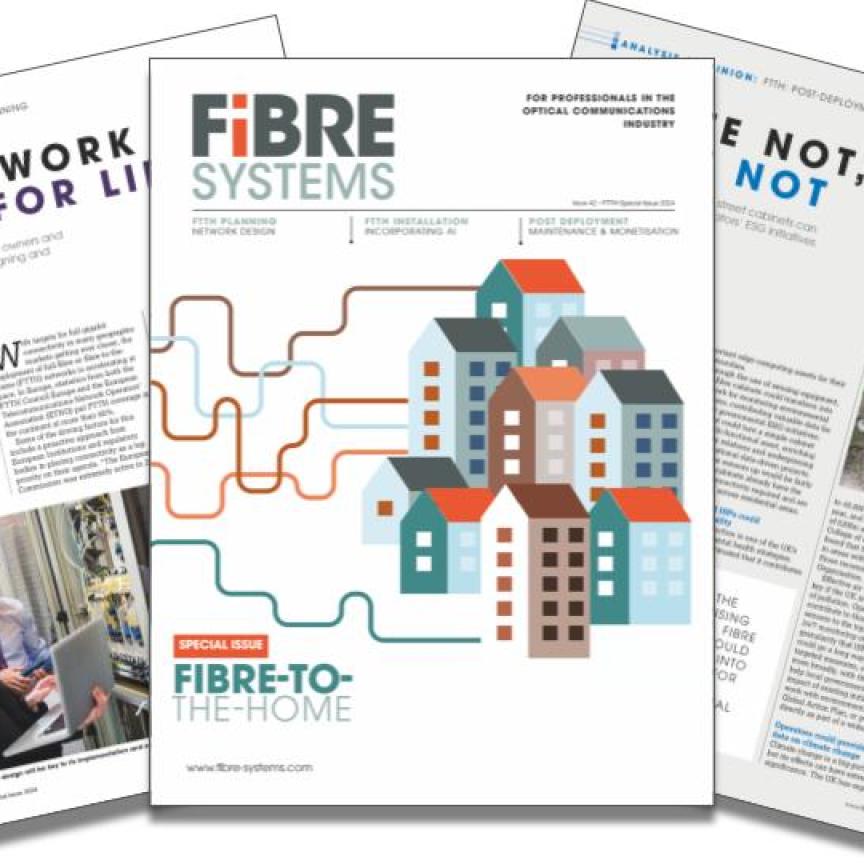Mattias Fridström looks at the role of software and collaboration in maximising optical networks in the future
As more businesses and industries invest in technical infrastructure and innovative tools in a worldwide effort to build smart, connected organisations, the demand for capacity has reached a fever pitch. The result is a growing pressure on the fibre optic backbone networks of service providers and internet content providers alike.
To help meet the demands of this digital transformation, carriers leverage a combination of software defined networking (SDN) and network functions virtualisation (NFV). This is all part of a larger trend called 'softwareisation', where network data can be 'surfaced' in order to increase visibility, enabling the sharing of data with other applications such as artificial intelligence (AI) and machine learning (ML) for analysis, network automation and route optimisation.
Most importantly, softwareisation facilitates self-service and bandwidth-on-demand applications, allowing businesses more flexibility to manipulate bandwidth or services according to their needs—which can fluctuate widely. So, as those technical investments gobble up bandwidth and capacity, softwareisation can empower businesses to intelligently apply resources where they are most impactful.
Ware it's at
Optimising resources through software is only one of the ways in which optical leaders are addressing the demands fuelled by digital transformation. Emphasis on challenging the boundaries of hardware-based communications technology hasn’t lessened, with single-wavelength transmission capacity now reaching 800Gb/s. But, the real innovation comes when advances in optical layer software intelligence and automation clear the way for an opportunity to extract additional value from physical network assets.
There are three main ways that softwareisation, automation and understanding the data on our networks can help shape the future of our hardware and optical networks.
Real-time data and response
Optical networks typically rely on a huge number of manual calculations when it comes to upgrades and network expansion. The very nature of those calculations means not only that the process is slow and unresponsive, but that as an industry we tend to err on side of caution when it comes to margins, so that we can ensure reliability. But as we will see later, softwareisation opens up a real-time window on what is happening on the network that can benefit carriers, operators and their customers.
Interop and transparency
We are now in an era where open line systems are more common and seen as very important to carriers worldwide, who do not want to be locked into buying solutions from one supplier. This requires efforts from all parties to ensure interoperability between each piece of the optical hardware and software chain. We all need to be able to see and assess what is happening across the networks with no ‘black holes’. The kind of real-time automation and softwareisation outlined above will not realise its potential without this, and getting it right will benefit all.
The crystal ball of failure
The data on the live network can tell us so much, if we use it wisely. Through ML it is possible to identify patterns in the lead-up to network failures and create AI algorithms that can monitor the network and predict future failures before they happen. Those failures may be hardware or software related, but through automation, we can then tweak the software or book engineers for site visits, minimising emergency repairs or failures.
A great demonstration of these points is the work we undertook partnering with Coriant (now part of Infinera) over several years to improve the efficiency of network assets. An industry first trial in 2018 demonstrated the operational value of optical performance awareness based on accurate 'residual margin' measurement during real-time operations and based on state-of-life fibre conditions. This directly addressed the challenge of optical networks lacking the ability to accurately measure margin in real time, which can increase costs, slow wavelength activation and prevent the network from operating at its highest possible capacity. The trial was expanded in 2019 to 490 live network links across the Telia Carrier backbone network in Europe— testing the limits of our software intelligence and automation capabilities.

During the trial, an assortment of real-time use cases was tested on network routes and links, including dash- board-based service health checks, real-time performance awareness, and residual margin analysis and optimisation. Understanding the real-time condition of residual margin in a multi-domain network is a complex process as it is impacted by a range of issues including signal quality, optical signal to noise ratio (OSNR), linear impairments, and nonlinear impairments.
By pushing optical innovation forward in this trial, we were able to provision two additional wavelengths at 200G, delivering 400G more capacity over the same network based on the results of this new software-enabled intelligence and the increasingly flexible network capabilities enabled by softwareisation.
Shining in the sun
When applied to an entire global network, the potential impact of automation and softwareisation to help carriers, service providers and end users deliver and use capacity more efficiently is immense. Carriers and service providers can save on costs, increase capacity, improve planning and growth while maximising their existing investments. Customers can benefit from flexible, scalable self-service bandwidth on-demand and across other applications.
As a sector we make it our business to ensure the safe delivery of every byte of data, yet we are only just starting to use our own data to maximise the networks at the physical level. But as an industry we must accept the openness and interoperability that is needed to make this a reality. We can choose to flood our networks with intelligent light, or wither in the shadows. We’ve had a taste of what it is like to be under the sun when intelligence is applied to our live networks, and must move together towards achieving even more.
Mattias Fridstrom is chief evangelist at Telia Carrier


